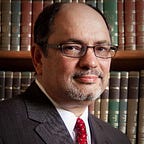History of Independence Day: Was the Declaration of Independence really signed on July 4, 1776?
Independence Day or the Fourth of July celebrates the adoption by the Continental Congress on July 4, 1776, of the Declaration of Independence, proclaiming the severance of the allegiance of the American colonies to Great Britain. It is the greatest secular holiday of the United States, observed in all the states, territories, and dependencies.
Although it is assumed that the Continental Congress unanimously signed the document on the 4th of July, in fact not all delegates were present, and there were no signers at all. Here is what really happened.
Resolution
The congressional delegate from Virginia, Richard Henry Lee, introduced in the Continental Congress, on June 7, 1776, a resolution
“that…body declare the United Colonies free and independent States, absolved from allegiance to or dependence on the Crown or Parliament of Great Britain…”
Committee of Five
On June 10 a committee of five, featuring Thomas Jefferson (the actual scribe), was appointed to prepare a declaration suitable to the occasion in the event that the Virginia resolution was adopted. Jefferson’s version was revised by Benjamin Franklin and John Adams before it went to the Congress where they did some editing of their own. The other two on the committee were Robert R. Livingston of New York and Roger Sherman of Connecticut.
Approval
Congress approved the resolution July 2; the declaration composed by Jefferson and amended by his committee was adopted July 4. That evening John Hancock ordered Philadelphia printer John Dunlap to print 200 broadside copies of the agreed upon Declaration that was signed by him as President and Charles Thomson as Secretary. These were distributed to members of the Congress and distributed to the 13 colonies and elsewhere. The Declaration was read in the yard of the state house July 8. New York did not even vote on it until July 9. The signing was even more gradual, and it is somewhat misleading to speak of the “fifty-six original signers of the Declaration of Independence.”
By August 6, most of those whose names are on the document had signed, but at least six signatures were attached later. One signer, Thomas McKean did not attach his name until 1781! Some of those who signed were not even in Congress when the Declaration was adopted, and some who voted for it in Congress never did get around to signing it. Robert R. Livingston was one of the original committee of five; he helped to frame it; he voted for it, and he never signed it.
Celebration
The first anniversary of the declaration was observed only in Philadelphia, PA, by the adjournment of Congress, a ceremonial dinner, bonfires, the ringing of bells and fireworks. In 1788, after the requisite number of states had adopted the Constitution, Philadelphia celebrated July 4 by elaborate festivities, including a grand procession.
Recognition
However, it was not until September 3 of 1783 that major European countries recognized the end of the American Revolutionary War. The Treaty of Paris was signed between the British and US at Hotel d’York in Paris. The Peace of Paris (or the Treaties of Versailles) recognized the end of the American Revolutionary War — among other European issues — and were signed between the representatives of King George III of England and representatives of France’s King Louis XVI, Spain’s King Charles III and the States-General of the Dutch Republic.
Observance
Boston, Massachusetts first observed the day in 1783, and thereafter this celebration replaced that of the Boston Massacre, March 5. The custom spread to other cities and states, where the day was marked by parades, patriotic oratory, military displays, and fireworks. In the present day, games and athletic contests, picnics, patriotic programs and pageants, and community fireworks of pyrotechnic expertise are characteristic of the 4th of July.
Bill Petro, your friendly neighborhood historian
www.billpetro.com
Click the 💚 below so other people will see this here on Medium.
